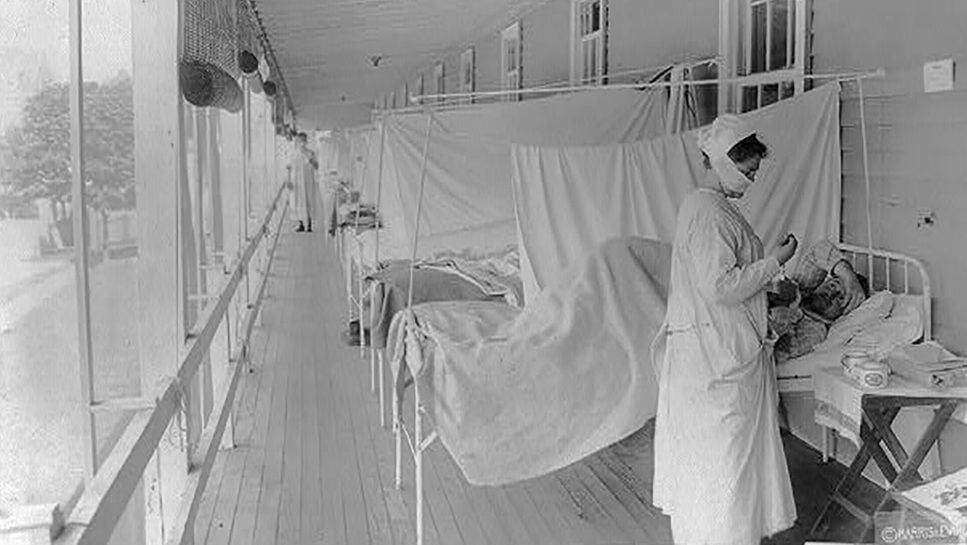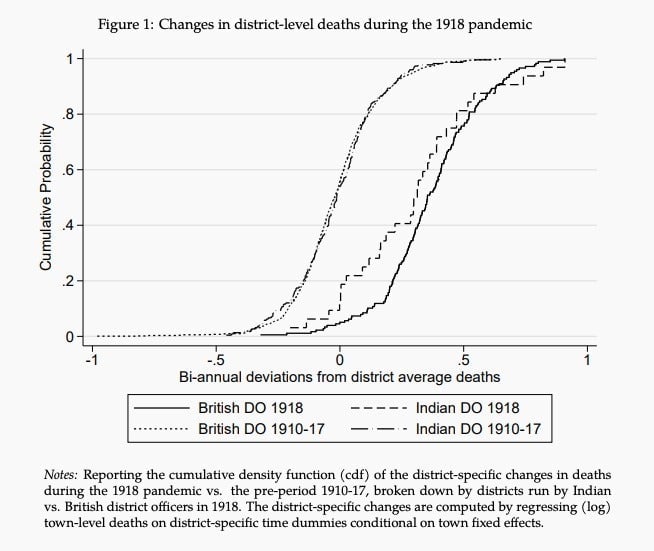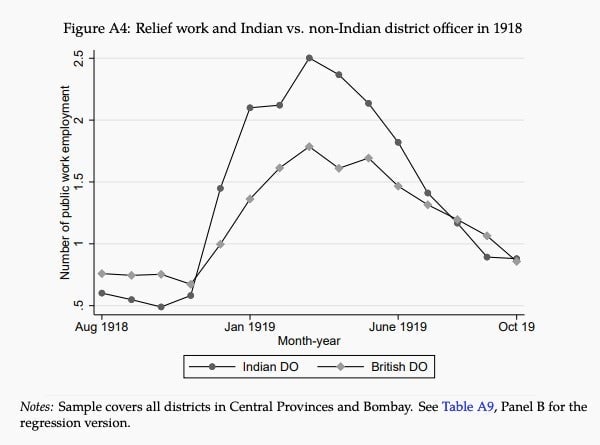The British Raj’s Spanish flu response has a lesson for India’s Covid-19 battle
As India races towards the 4-million mark of Covid-19 positive cases, there are lessons its government can learn from the Spanish influenza pandemic almost a century ago.


As India races towards the 4-million mark of Covid-19 positive cases, there are lessons its government can learn from the Spanish influenza pandemic almost a century ago.
Under the rule of the British Empire, India lost 10-20 million lives to the 1918 pandemic. The year was made more excruciating by meagre rainfall, crippling agriculture produce, and leading to conditions of famine in major parts of the country. Yet, there were districts that performed significantly better than others in terms of managing the pandemic and offering famine relief.
Districts under Indian officers saw as much as 15% fewer deaths than those under the control of British officers, according to a paper (pdf) by Guo Xu, assistant professor of business and public policy, the Haas School of Business at the University of California, Berkeley.
For this research, Xu looked at town-level vital statistics between 1910 and 1925 across 1,271 districts in India at the time.

He found that while death rates in these towns were at par for towns led by Indian and British district officers (DOs) before and after the Spanish flu pandemic, the difference in spike in death rates only emerged during the pandemic years.
While there are several reasons for Indian DOs outperforming their British counterparts, the one thing that emerges most strongly is how bureaucratic representation can make a state more responsive during crises.
Why states under Indians performed better
Xu explored the possibility that this improvement could be because the Indians DOs faced greater entry barriers to the civil services, even though they sat for the same examinations as their British colleagues. “One explanation for the observed differential performance then is that Indian DOs—entering the service despite discrimination—are more qualified than their British counterparts,” he wrote.
But on comparing their qualifications, Xu found no significant differences in qualifications of Indian and British DOs.
What is more plausible is the lack of local knowledge the British DOs had. “Most British ICS recruits never saw India prior to their first deployment; many had limited command of the local languages,” he wrote.
The third element was the amount of relief aid spent on the residents of these districts by their administrators. This relief spending went up in November 1918, during the second and strongest wave of the pandemic. While there is no difference in spending between Indian and British DOs before November 1918, the Indian DOs increased their spending during the second wave by twice as much as the British officers did.

What this means for India today
In the sphere of the political economy, Xu wrote, two schools of thought broadly take precedence. One is the Weberian school of thought, first promulgated by German sociologist Mark Weber, which says that all bureaucracy should be “dehumanised.” Which is to say, that it should be a “rational” organisation led by unbiased processes.
The second, more recent view argues for greater representation in public organisations from the people they wish to serve. “Greater representation, it is argued, helps align preferences, provide social incentives and enable bureaucrats to leverage private information,” Xu wrote.
In India today, this loosely translates into the federalism of the states, where the central government plays a nodal role, but allows for greater autonomy at local district levels. This autonomy would ideally extend beyond the political sphere into the financial.
Currently, though, India’s central government owes Indian states Rs2.35 lakh crore ($32.17 billion) in goods & services tax, a shortfall that has worsened because of the pandemic.